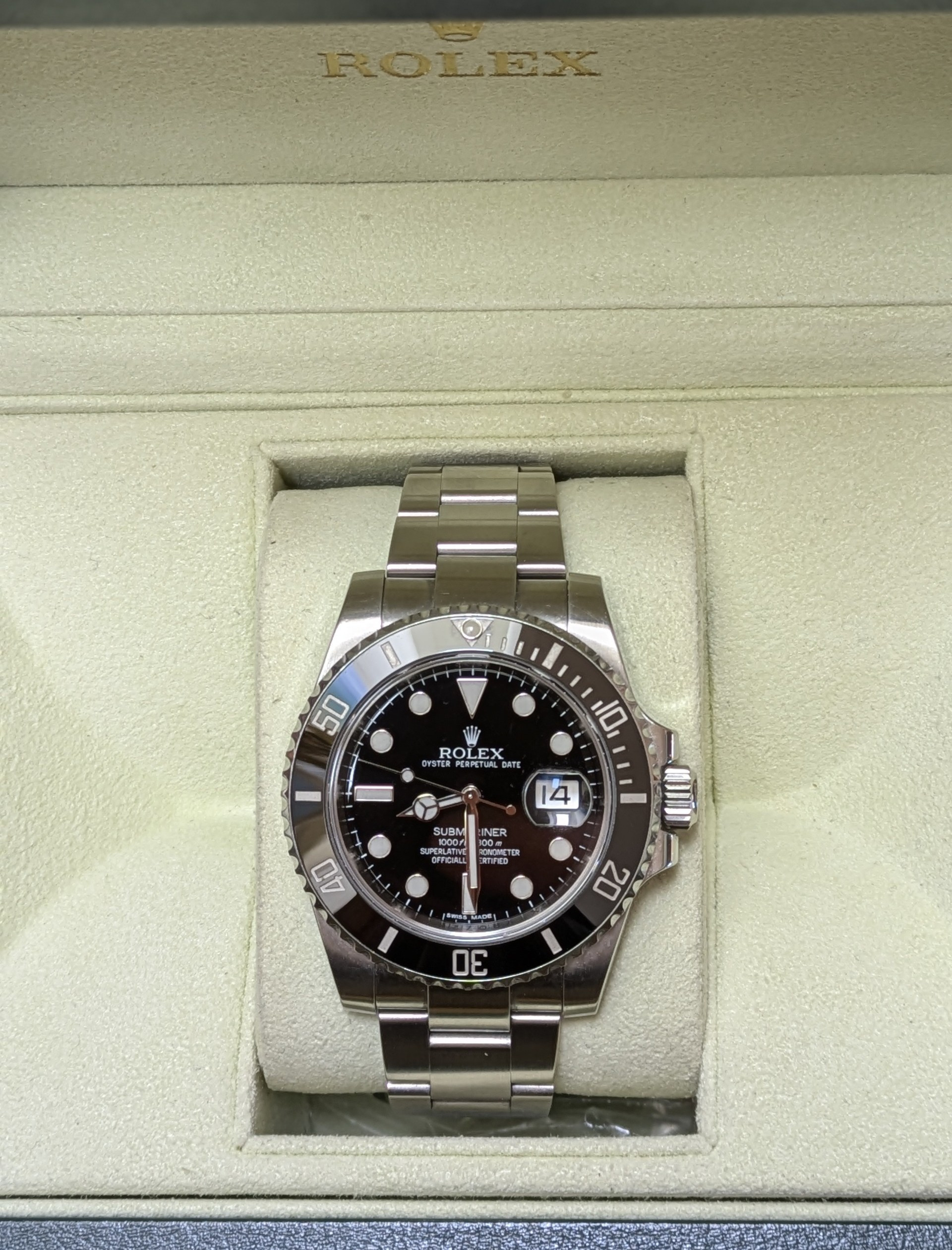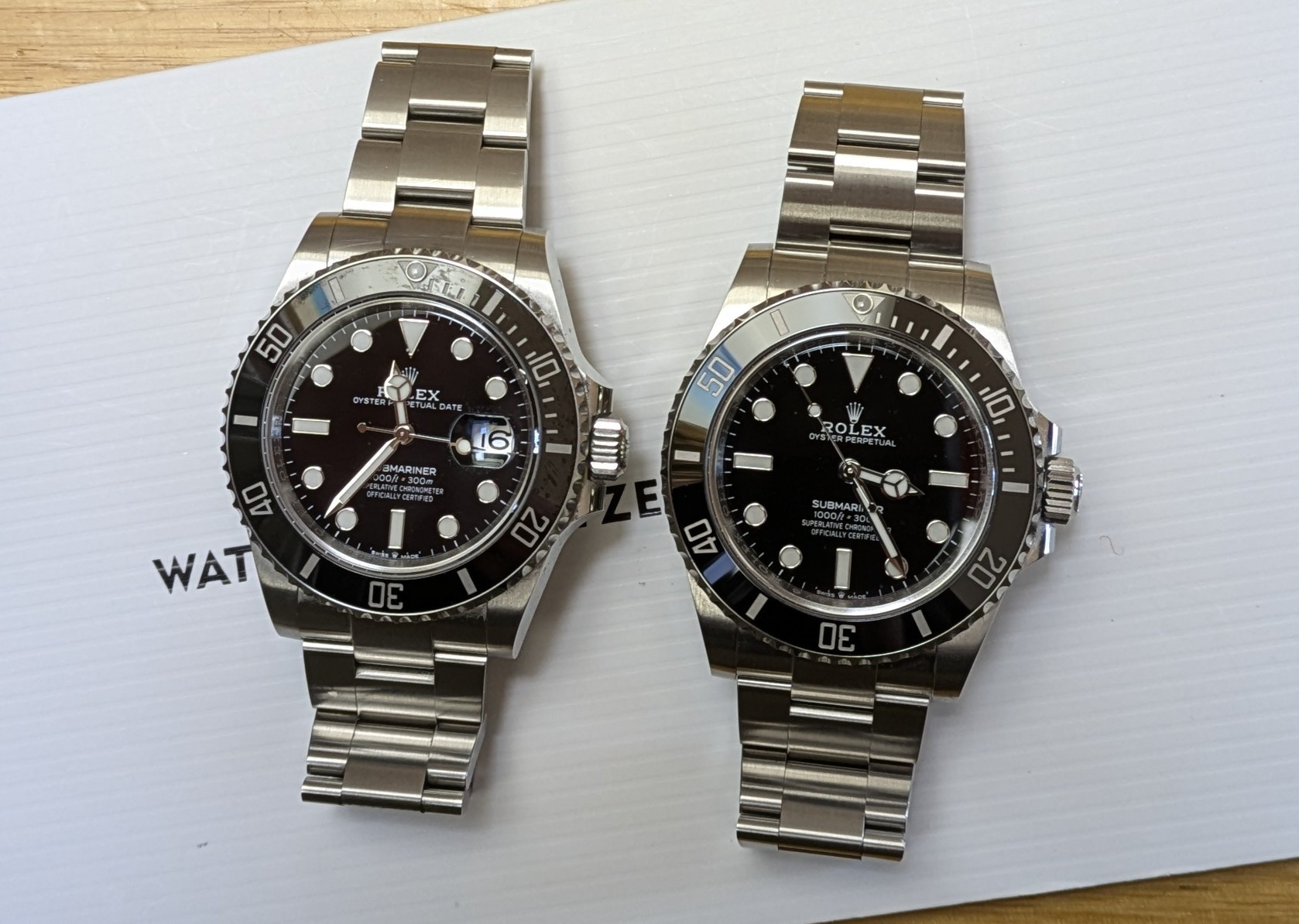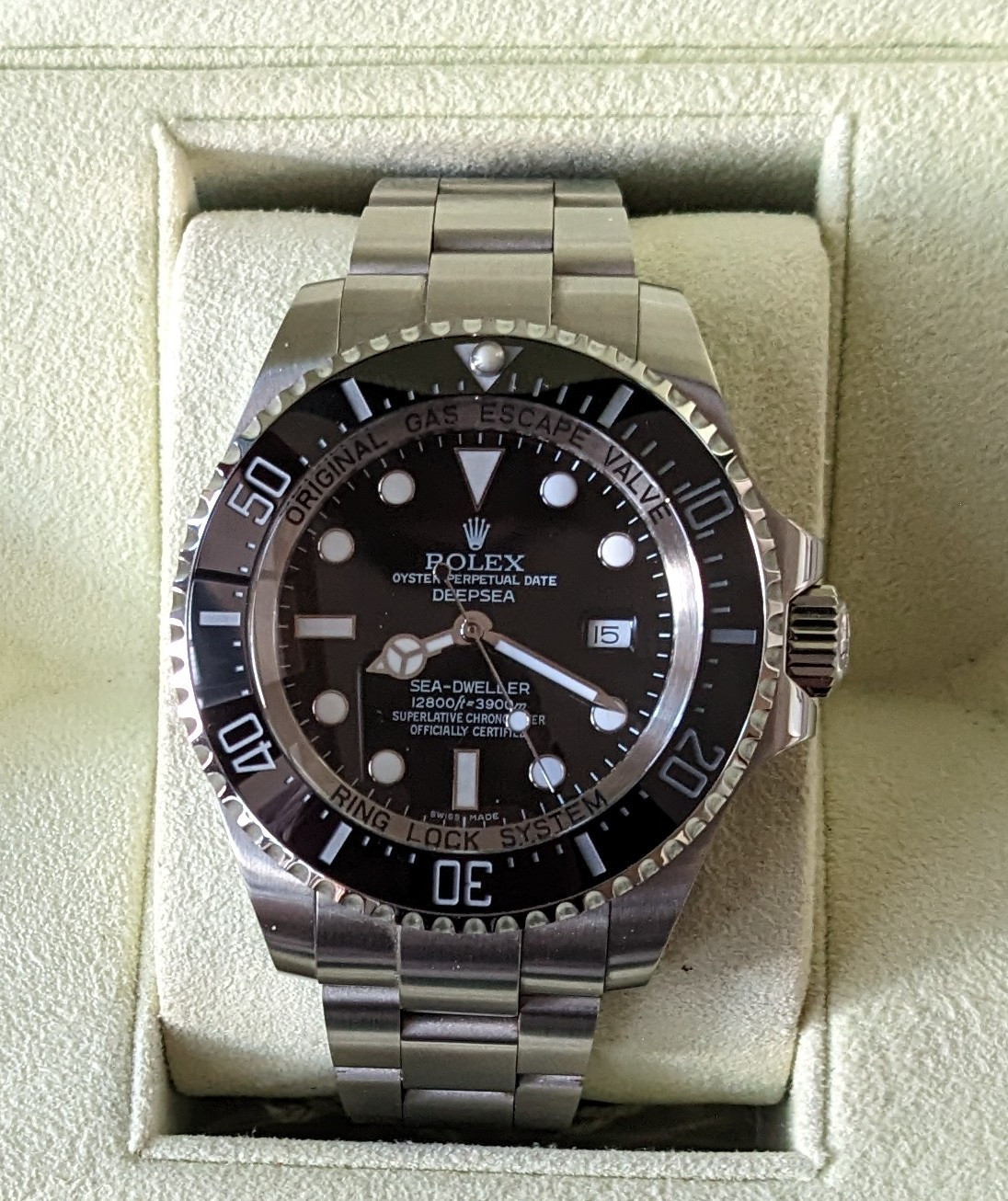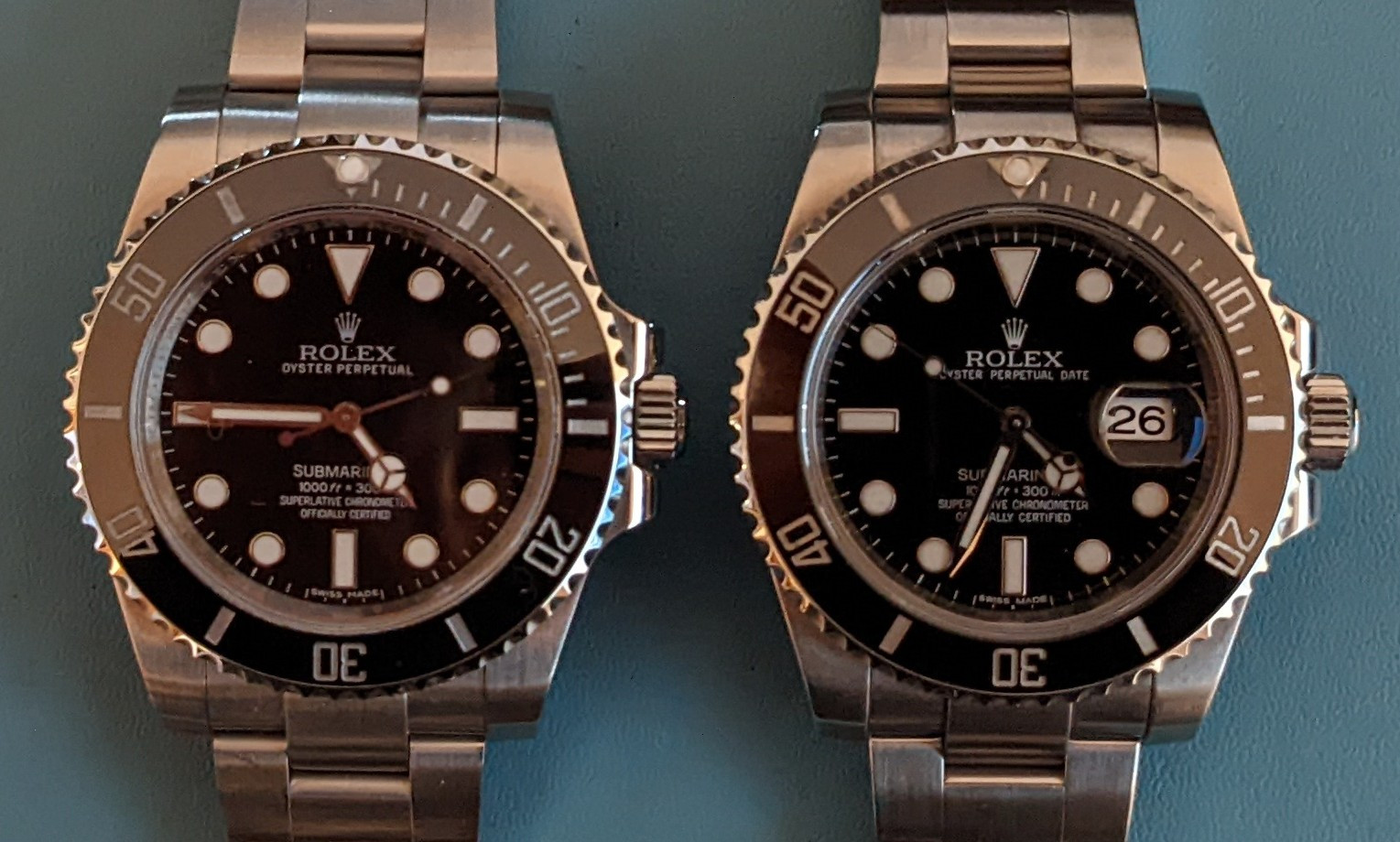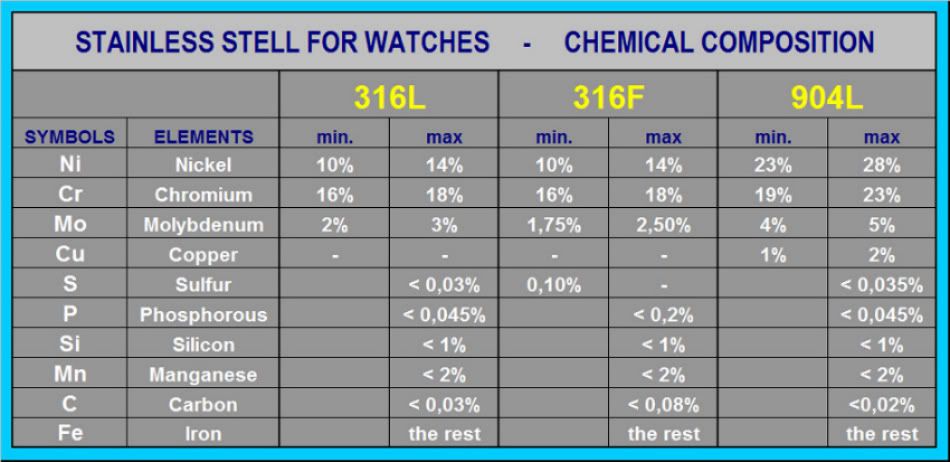The first one is gen.
The Rolex crown between "Swiss Made" was introduced with the 12X Sub, 126660 Sea-Dweller Deepsea, and other references as they were released. The 126660 was released in 2018 and the 12X Sub was 2020.
Given that there were factories advertising reps as having 904L SS when they actually had 316, and some people claimed those reps with (not) 904L were visually different to the ones with 316, I believe that there was no obvious visible difference at that time. If anything, the difference was more with the brushing than anything else, and only on some, not all. There is a difference when looking at them in the flesh vs a photo, and depending on the light and angle.
Take the second picture above as an example. Both are 904L but, to me, the watch on the left looks white/warmer than the other. In the flesh, I cannot see any difference.
The whiter/warmer appearance is apparently more applicable to 904L, and probably more so to gen. In this picture, the watch on the right is gen, but the rep on the left looks warmer. Both are 904L.
I think it's fair to say that the 904L SS on reps is inferior to genuine, but does this change the appearance? Probably not. Not then and not now.
General consensus as far as visuals go -- I think it's all subjective.
